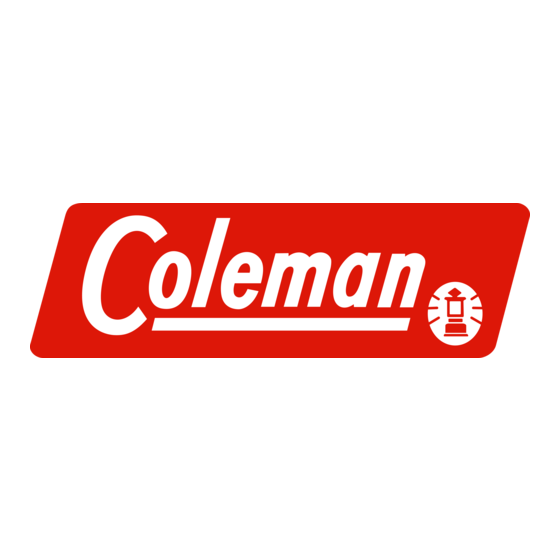
Subscribe to Our Youtube Channel
Summary of Contents for Coleman AT70
- Page 1 AT70 Please retain the packaging and instructions for further reference, as they contain important information.
- Page 2 With the proper care and handling of your telescope, you will enjoy years of viewing pleasure. As an astronomical device, the AT70 telescope has been designed for both a beginner and advanced star gazer. It provides views of the moon and planets, as well as dozens of galaxies, star clusters, and nebulae.
- Page 3 PARTS LIST FOR AT70 Telescope: WARNING! CHOKING HAZARD Small parts. Not suitable for children under 3 years. Specifications, colors, packaging, and/or contents of this manual are subject to change without notice.
- Page 4 ASSEMBLY: 1) Carefully remove all parts from the cardboard cartons and lay them on a flat surface in order to take an inventory of all the pieces. Keep your box for storage or in case you ever need to ship your telescope. 2) Remove the tripod (1) from the box.
- Page 5 7) Remove the finderscope and the finderscope bracket (6) from the box. Remove the two knurled thumbscrews from the telescope main tube (See Illustration 3). Position the finderscope bracket onto the telescope tube so that the holes in the base of the bracket line up with the exposed holes in the telescope tube.
-
Page 6: Finder Scope Alignment
HOW TO USE YOUR COLEMAN AT70 FINDER SCOPE ALIGNMENT Since a telescope by design has a narrow field of view, it can be challenging to locate the particular object you wish to view. For this reason the telescope is fitted with a low-power, wide-field miniature optical device called a finderscope. -
Page 7: Technical Specifications
10mm of objective lens diameter. Another good rule of thumb is that the usable magnification of a telescope is about 3x per mm of the aperture (for the AT70, the aperture is 70mm) under good conditions. Thus, magnification of around 210x or less is ideal for a telescope with a 70mm diameter objective lens (aperture) and is best for observing most celestial objects. -
Page 8: Using Your Telescope
To correct this, the COLEMAN AT70 is equipped with an erecting diagonal prism (4). This accessory is inserted in the eyepiece holder of the telescope between the eyepiece and the telescope. -
Page 9: Care And Cleaning Of The Optics
G. CARE AND CLEANING OF THE OPTICS: The optical components of a telescope will get dirty over time. Dirt or dust on a lens should be removed with the utmost care. A considerable amount of dirt or dust would have to accumulate on the optical surface before your view would be compromised. - Page 10 The popular and more familiar constellations often provide the easiest landmarks to help find the planet’s locations and paths of orbit. Most people have looked up at the sky at night and seen some of the planets without even realizing it. A planet looks like a bright star but does not twinkle like a star does;...
-
Page 11: Frequently Asked Questions
J. FREQUENTLY ASKED QUESTIONS: 1) How far can I see? If you stand outside and look up at the night sky on a clear evening, you can see hundreds of stars without the aid of your telescope. The telescope is a light-gathering instrument that magnifies the view—providing significantly more detail and unveiling more stars, nebulae, and celestial objects. - Page 12 Made in China...




Need help?
Do you have a question about the AT70 and is the answer not in the manual?
Questions and answers